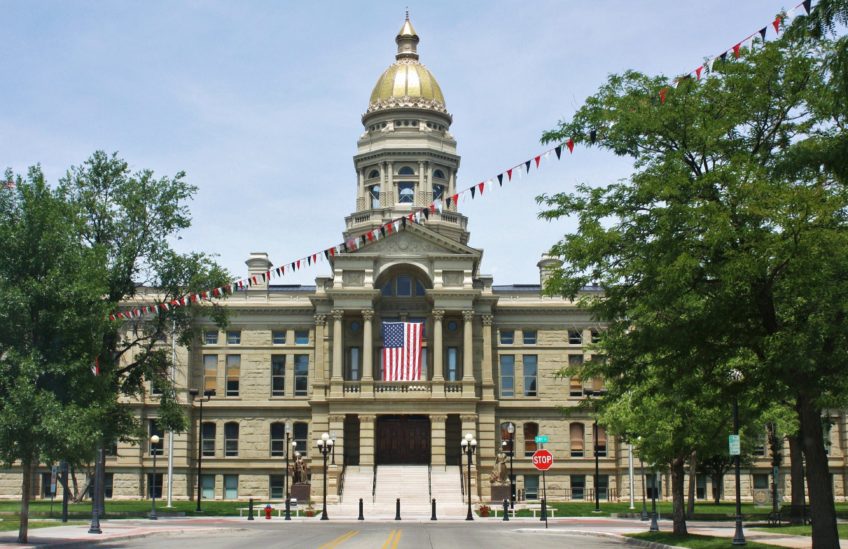Wyoming State of the State: Fiscal Soundness Despite Setbacks in Energy Sector of Economy
Given the uncontrollable factors impacting Wyoming’s economy the past several years, the steadfastness of the state is especially commendable.
Governor Matthew Mead proclaimed in his 8th and final State of the State Address, “With our great citizens, improved revenues, large savings, well-funded pension plans, investments in our future and opportunities on the horizon, the state of our state is strong.” Given the uncontrollable factors impacting Wyoming’s economy the past several years, the steadfastness of the state is especially commendable. Economic outlook remains in the top 10 according to Rich States, Poor States.
The energy sector is the cornerstone of the Wyoming economy. Coal mining employs more people than any other segment of the economy. Support activities for mining, other mineral mining, pipeline transportation, and oil and gas extraction also lead the way. Wyoming produced a whopping 41 percent of all coal U.S. produced in 2016. But total coal production in the state dropped a stunning 36 percent since 2008. This drop-off in production coincides with a 46 percent drop in the export price index for coals and related fuels since August 2011. Likewise, natural gas production has dropped by about one-third since early 2010 even as prices dropped by about 25 percent over this period. With such an immense concentration in these energy-related commodities, total real state GDP in 2016 (the most recent year available) remained almost 9 percent below the 2008 peak.
In the face of these challenges, Governor Mead applauded that “we have smaller government, that is, we have a smaller budget, fewer employees and fewer rules. While we have downsized government, we have built our permanent and rainy day savings….During a period of diminished revenue, the trimming of the budget and increasing our savings, we have continued to invest in Wyoming’s future.” These reductions have been real reductions. Total state funds spending dropped to just over $4 billion in 2017, the lowest level since 2004. Compared to 10 years prior (2007), spending declined 9.3 percent while population plus inflation growth grew by 26 percent. Compared with several years ago, the number of state employees per 1,000 people shrank by 8.3 percent. Agencies have reduced the number of rules by 30 percent at the governor’s direction. In addition to levying no income tax on individuals or businesses, the property tax burden has declined by nearly 20 percent since 2010. The sales tax burden (as a percentage of personal income) has declined as well.
Despite the frugality of the past 10 years, a look even further out tells a different story. State spending exploded in the 1990s—more than doubling from 1997 to 2004 and doubling again from 2004-2010. Over the past 20 years—even with the steep recent cuts—total state funds spending grew by 163 percent, more than double the combined 70 percent population (18 percent) plus inflation (52 percent) growth. The current fiscal challenges stem in part from these past excesses. In fact, total state spending per capita (including federal funds) is far above the national average and exceeds 40 other states, including every state in the Mountain West. Streamlining and saving for the future mark enormous strides in fiscal prudence.
Artificial roadblocks to growth courtesy of the federal government have compounded the economic stress from global economic developments. The governor reminded citizens, “We have fought the good fight on federal overreach. The Attorney General’s office has been very busy the past seven years.” In particular, the state fought back against the EPA Waters of the United States rule, a federal haze plan for Wyoming, the Clean Power Plan, and a federal hydraulic fracturing rule. Mining and energy production are core components of the Wyoming economy. This overreach threatened to even further cripple industrial output.
The focus on the Economically Needed Diversity Options for Wyoming (ENDOW) is somewhat troubling. According to the governor, ENDOW’s intent is to “develop a 20-year economic strategy and then implement it over 20 years…in order to grow and expand our economy.” In fact, of all the “opportunities on the horizon,” the governor considers ENDOW to be the “top one.” The governor’s budget indicates several ENDOW activities potentially at odds with a free market economy, including “stimulating new and emerging industries” and “allocating resources to best promote economic diversification.” A focus on maintaining low tax rates, quality education, and core infrastructure is preferable to any form of state favoritism towards specific businesses or industries.
The governor also indicated support for tax hikes (i.e., “additional revenue”) to fund education spending. Specifically, he mentioned “broadening the tax base” along with lodging taxes and tobacco taxes. Proposals to hike cigarette taxes by $1 per pack and impose a 1 percent lodging failed to pass the legislature this session.
Wyoming enjoys the 8th best economic outlook in the nation, according to Rich States, Poor States. This outlook has failed to translate into performance largely due to numerous macroeconomic factors and regulatory measures. The governor’s commitment to state regulatory reform, bureaucratic downsizing, and budget reform has resulted in the state weathering this storm with a strong balance sheet and low taxes. Rather than resort to higher taxes or centrally planned economic development, the continuation of a business-friendly climate is needed to incentivize further diversification and future growth of the economy.

